Fun Facts About Police Squad!
-

Drebin (Leslie Nielsen), Norberg (Peter Lupus) and Hocken (Alan North), the main characters of Police Squad!
Police Squad! was a television comedy series first broadcast in 1982. It was a spoof of police dramas, packed with visual gags & non sequiturs.
- While a parody of many television shows & movies, it bore a particular resemblance to the Lee Marvin cop show, M Squad.
- Police Squad! was created by Jim Abrahams, David Zucker & Jerry Zucker, who had previously worked together on The Kentucky Fried Movie & Airplane!.
- Despite critical acclaim, the show was cancelled by ABC after just six episodes.
- This was enough to gain a strong cult following through repeats on TV, which led to the 1988 movie version The Naked Gun: From The Files of Police Squad! & two further sequels. Many gags from the show were recycled for the films.
- Leslie Nielsen played Detective Frank Drebin in the series & all three films. Alan North played the role of Captain Ed Hocken on the show; in the films, the role was played by George Kennedy.
- Peter Lupus also co-starred on the show as Officer Nordberg, while O.J. Simpson appeared as Nordberg in the films.
-
Ed Williams, who played scientist Ted Olson on the show, would reprise his role in the films, making him & Nielsen the only two actors from the series to appear in the movies.
- Robert Goulet, who appeared as one of the “special guest stars” who were invariably killed off at the beginning of their episodes, would appear as villain Quentin Hapsburg in the second Naked Gun film.
- Dr. Joyce Brothers played herself in The Naked Gun: From the Files of Police Squad! She also played herself in Episode 4 of the television series.
- The show was presented in the style of a Quinn Martin show of the early 1970s, with a portentous narrative over the opening titles which made a big feature of the show being “…in color”, followed by numerous gags.
- Each episode would similarily play credits over a 1970-s style freeze frame of the final scene, except that the frame was not frozen – the actors simply stood motionless in position while other activities (pouring coffee, convicts escaping, chimpanzees running amok) continued around them.
-
One noticable difference between the series & the films is in the portrayal of Frank Drebin. In the series he is shown to be considerably more competent & straight-laced, & less Maxwell Smart-like than he is depicted in the films. The TV portrayal of Drebin was never intended to be overtly comic, merely a sendup of the ultra-serious Dragnet-like portrayal of TV cops (Nielsen’s trademark deadpan delivery was a perfect fit for this kind of parody). In the series, Drebin was intended to be the archetype of the straight man, in contrast to the rampant hilarity going on around him. It was not until the films that Drebin was changed to a more outwardly comic character.
- ABC announced the cancellation of Police Squad! after four of its six episodes had aired in March of 1982. The final two episodes were aired that summer.
- According to then-ABC entertainment president Tony Thomopoulos (on Entertainment Tonight), “Police Squad! was cancelled because the viewer had to watch it in order to appreciate it.” What Thomopoulos meant was that the viewer had to actually pay attention to the show in order to get much of the humor, while most other TV shows did not demand as much effort from the viewer.
- In its annual “Cheers & Jeers” issue, TV Guide magazine called the explanation for the cancellation “the most stupid reason a network ever gave for ending a series.”
-
Matt Groening is quoted as saying “If Police Squad! had been made twenty years later, it would have been a smash. It was before its time. In 1982 your average viewer was unable to cope with its pace, its quick-fire jokes. But these days they’d have no problems keeping up, I think we’ve proved that.”
- Four years later, ABC aired another law enforcement series spoof titled Sledge Hammer! which enjoyed more longevity. The show, created by Alan Spencer, featured characters that were not one-dimensional (unlike “Police Squad”), as well as more serious undercurrents to the plots. There was also a legitimate relationship between David Rasche’s Hammer & his female partner, Doreau.
 The series was released to DVD on November 6, 2006 in the United Kingdom, & a day later in the United States. Special features include audio commentaries on several episodes, a gag reel, a new interview with Leslie Nielsen, featurettes, & a photo gallery. Co-creators David Zucker, Jerry Zucker, & Jim Abrahams recorded audio commentary, along with series writers Robert K. Weiss & Robert Wuhl.
The series was released to DVD on November 6, 2006 in the United Kingdom, & a day later in the United States. Special features include audio commentaries on several episodes, a gag reel, a new interview with Leslie Nielsen, featurettes, & a photo gallery. Co-creators David Zucker, Jerry Zucker, & Jim Abrahams recorded audio commentary, along with series writers Robert K. Weiss & Robert Wuhl.
Opening Title Sequence
The title sequence was packed with sight & visual gags. A selection:
- Spoofing 1960s police show N.Y.P.D., the opening credits would show a red flashing squad car light going down a city street.
- When Captain Hocken is introduced in his office, someone offscreen starts shooting the place up, with ridiculous results (people catching on fire, jumping out windows, etc; one woman even throws her baby on the floor as she runs away).
- According to Pat Proft, had the show been renewed for a second season, this sequence would have been replaced by Mahatma Gandhi brandishing an assault rifle.
Titles
The opening sequence of each episode ends with an on-screen graphic listing the title of the episode, accompanied by an announcer’s voice-over intentionally giving a different title for the episode. The list of episode titles, with the on-screen graphic title followed by the announcer’s title in parentheses:
-
“A Substantial Gift” (“The Broken Promise”)
- “Ring of Fear” (“A Dangerous Assignment”)
- “Rendezvous at Big Gulch” (“Terror in the Neighborhood”)
- “Revenge & Remorse” (“The Guilty Alibi”)
- “The Butler Did It” (“A Bird in the Hand”)
- “Testimony of Evil” (“Dead Men Don’t Laugh”)
Guest Stars
During the opening credits of each episode, a well-known actor is introduced as a “special guest star”, but is then killed off during the introduction, thus completing their appearance on the show. Stars included:
- Lorne Greene (stabbed & thrown from a speeding car)
- Georg Stanford Brown (crushed by a falling safe)
- Florence Henderson (gunned down while singing in a kitchen)
- William Shatner (dodges a salvo of bullets but drinks poisoned wine)
- Robert Goulet (executed by firing squad)
- William Conrad (stabbed & thrown from a speeding car)
- A sequence was filmed with John Belushi (chained to concrete blocks underwater) but the actor died shortly before the episode was due to air, & the producers decided not to use the scene. According to the user-edited Internet Movie Database the producers wanted to include the Belushi scene when Police Squad was rebroadcast in the 1990s, but the footage could not be located & is presumed lost.
Running Gags
Frank Drebin’s rank constantly changes, often many times within a single scene. He often introduces himself (in narrative) as “Sergeant Frank Drebin, Detective Lieutenant Police Squad”, which is a non-existent rank made up of three real ones (Larger police departments often have Detective Lieutenants & Detective Sergeants, but NOT all three titles.) Also, in the first episode, a witness first refers to Drebin as ‘Sergeant’ then a few lines later calls him both ‘Lieutenant Drebin’ & finally ‘Captain Drebin’.
Drebin repeatedly drives into something (usually trash cans) when he parks his car. The number of trash cans he hits indicates the episode number i.e. one in episode one, two in episode two & so on.
Each episode had a crime lab scene where Ted Olson is giving a highly suspect or dangerous lesson to a kid, in a parody of Watch Mr. Wizard, when Frank interrupts him.
Ted uses the doorway while Frank walks around the set.
Drebin would offer a cigarette to people he was interviewing with the line “Cigarette?”, to which they would respond “Yes, I know” or “Yes, it is.” Drebin’s usual response would be a slightly nonplussed “Well…”
Drebin frequently needs to meet with Johnny, the omniscient shoeshine boy who knows everything in town, for “the word on the street”. Johnny won’t actually tell Frank anything until Frank slips him a bribe (often saying, “I dunno anything about it,” or, “It’s a big city,” until he’s paid). Each time Frank leaves Johnny, a specialist or celebrity arrives, & asks Johnny for advice about their particular profession:
- A doctor asks Johnny how to perform an operation
- A priest inquires about Johnny’s views on life after death
- A fireman is instructed how to fight a fire at a furniture warehouse
- Dick Clark asks about ska
- Joyce Brothers talks with Johnny about psychology
- Tommy Lasorda wonders about baseball, specifically his problems with his pitching game
The Act II label is followed by a joke:
- Act II: Bruté?
- Act II: Gesundheit
- Act II: Richard III
- Act II: Ball III
- Act II: Lieber
- Act II: Yankees One
The weekly criminal is always sent to “the Statesville Prison” (a pun on State Prison). Captain Hocken recites the names of the criminals caught in the previous episodes, so by episode six, five names are recited plus the final culprit.
The glass door of the squad room has “Police Squad” written on it in gold in such a manner that whichever side you look at it, one of the words is written backwards.
The Zucker Brothers hailed from Shorewood, Wisconsin, a suburb of Milwaukee. In every episode, a discreet reference is made to Milwaukee place.
Other jokes
In “Rendezvous at Big Gulch” (“Terror in the Neighborhood”), the characters work undercover in a locksmith shop. Whenever anyone enters, Norberg is cutting a key on a grinding wheel & loses his grip. The key flies up & embeds itself in the ceiling—along with hundreds of others already stuck. As someone exits the shop, the door slams & all the keys fall to the floor.
Drebin, posing as a locksmith, enters a man’s office & is greeted by the resident with “Who are you & how did you get in here?” to which Drebin replies, “I’m a locksmith … & I’m a locksmith.”
The locksmith shop at one point in the episode is vandalized with a rock thrown through the window, leaving a hole where the “L” would be in “Locksmith.” In a later scene, Frank goes to the shop to open it in the morning & sees a man waiting with a big ox. The window with the hole reads “ocksmith” (ox smith), & Frank can be seen explaining to the man he doesn’t shoe animals.
Also in the locksmith shop, behind the counter is a board labelled “Car Keys, House Keys, Florida Keys (a map of the Florida Keys), Francis Scott Keys (which are red, white, & blue), Honkeys (which are all white), Turkeys, & Pot Roast”
In “The Butler Did It” (“A Bird in the Hand”), a kidnapping takes place in a Japanese garden. This consists of pots with Japanese people standing in them. Drebin asks to see the “crime scene,” so a film projector is started showing the same scene of the kidnapping shown minutes earlier in the episode (complete with a slate).
In “A Substantial Gift”(“The Broken Promise”), as Frank & Ed are driving to Little Italy, the rear-projected background scene is from Rome, Italy, including the Colosseum. Later, the Leaning Tower of Pisa is seen out of an apartment window.
In the same episode, the U.S. Capitol Building is seen out the window of the Police Squad headquarters. In another episode, the Eiffel Tower is seen out the window. In each episode, a map of the New York City & Chicago metropolitan areas hang on the wall.
In “The Butler Did It” (“A Bird in the Hand”), Frank & Ed stop to fill up at an ARGON gas station. ARGON is the name of an oil company with an ad appearing in “Kentucky Fried Movie”, in which they claim to refine oil from teenager’s faces, discarded hair combs, leftover fast food, & other sources.
VIDEO: Police Squad! Opening Intro
VIDEO: Police Squad! Frank visits Johnny, the shoeshine guy
VIDEO: Police Squad! Epilogues
Special thanks to www.lonympics.co.uk





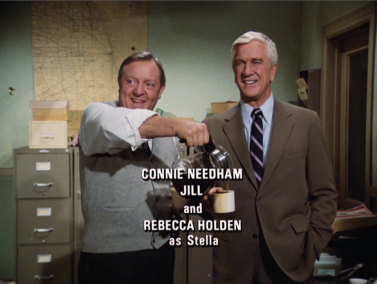































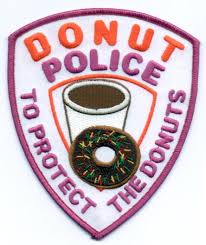
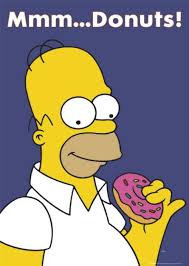
 Nationally, what is Randy’s Donuts best known for?
Nationally, what is Randy’s Donuts best known for?














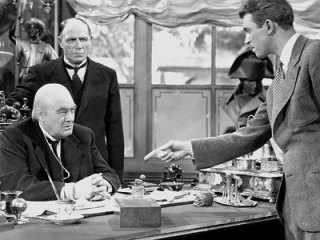















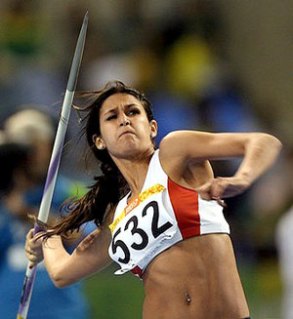


 The Mind of Adam J. Kovitz
The Mind of Adam J. Kovitz
Howard Cosell: One-time Lawyer Turned Sportscasting Legend
Howard Cosell
Fun Facts About Howard Cosell
He was asked by Robert Pauley to get sponsorship if he wanted a show weekly on ABC Radio. He surprised Pauley by getting sponsorship from his relative and Pauley gave him a show. In time, he would become a prominent personality on television, yet he never stopped working on radio. His popularity reached its zenith when he covered Muhammad Ali. Cosell was famous for narrating the facts ‘As it is like’ and his sense of style and facts actually changed the entire sports broadcasting industry. Unlike other reporters, Howard always involved a bit of intellectualism in his commentary and thus was able to give his personal analysis on the game instantly.
Special thanks to www.livetvcenter.com
Share this:
2 Comments
Filed under Entertainment, Sports, Television
Tagged as ABC, ABC Radio, ABC Sports, actor, actors, American, Army Transportation Corp, As it is like, bar, broadcast, broadcasting, Brooklyn, cadet, commentator, Cosell, degree, English, football, game, heart embolism, Howard Cosell, Howard Williams Cosell, intellectualism, Jackie Robinson, lawyer, Little League, Major, Manhattan, Mary Abrams, Monday Night Football, Muhammad Ali, NC, New York, New York University, North Carolina, NY, personal analysis, personality, practice, radio, Robert Pauley, School of Law, show, sponsorship, sportcaster, sports, sports broadcasting industry, sports commentary, sports journalist, sportscaster, sportscasting, sportspeople, state bar, state bar of New York, television, Union Law, United States of America, University of New York, voice, Willy Mays, World War II